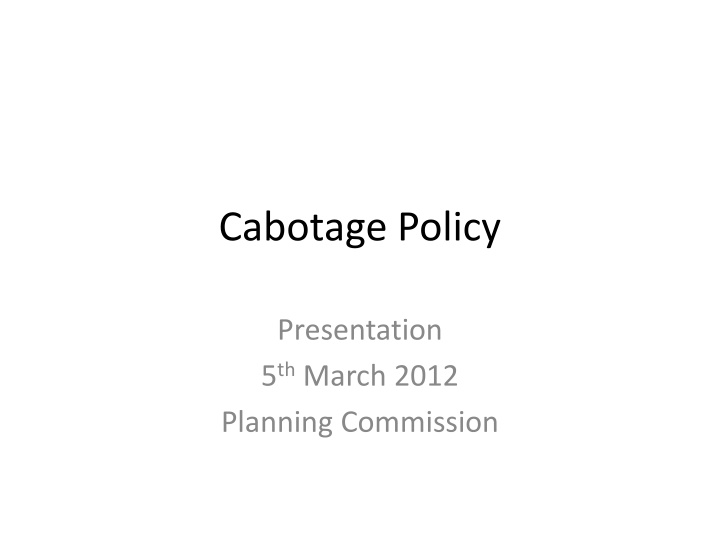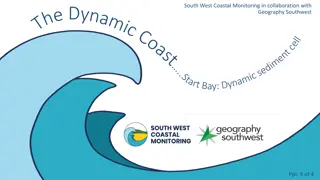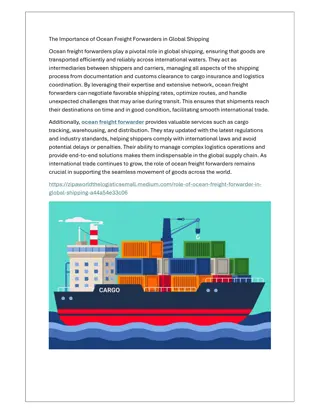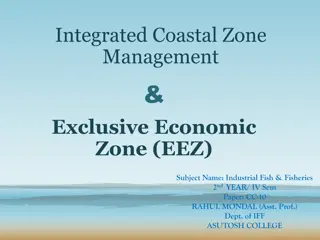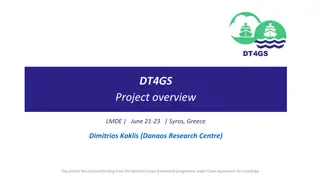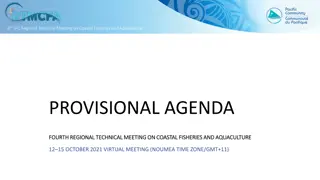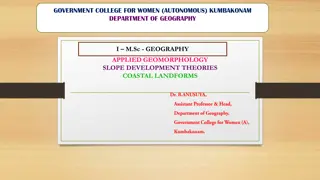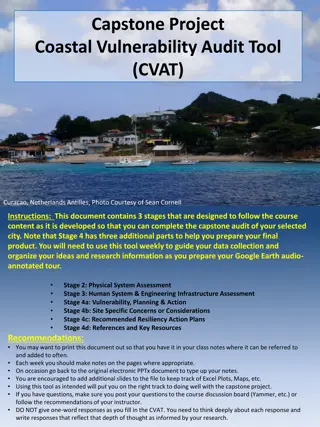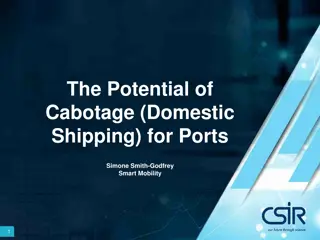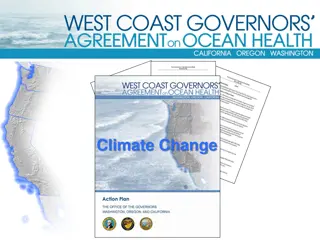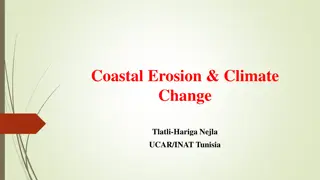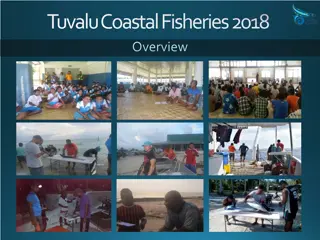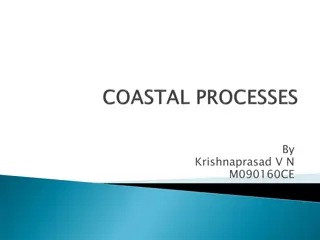Cabotage Policy and Coastal Shipping Analysis
In this presentation, the focus is on analyzing the cabotage policy and the existing status of coastal shipping in India. It discusses the importance of cabotage, changes in coastal cargo patterns, and the challenges faced in increasing Indian share in tonnage and cargo carried. The content emphasizes the need for a comprehensive approach beyond cabotage to boost domestic shipping industry.
Download Presentation

Please find below an Image/Link to download the presentation.
The content on the website is provided AS IS for your information and personal use only. It may not be sold, licensed, or shared on other websites without obtaining consent from the author.If you encounter any issues during the download, it is possible that the publisher has removed the file from their server.
You are allowed to download the files provided on this website for personal or commercial use, subject to the condition that they are used lawfully. All files are the property of their respective owners.
The content on the website is provided AS IS for your information and personal use only. It may not be sold, licensed, or shared on other websites without obtaining consent from the author.
E N D
Presentation Transcript
Cabotage Policy Presentation 5thMarch 2012 Planning Commission
STRATEGICALLY LOCATED ON THE EAST WEST SEA TRADE ROUTES
ICTT CONNECTIVITIES NH 47 Rail connectivity Rail connectivity NH 17 NH connectivity NH connectivity ICTT VALLARPADAM ICTT VALLARPADAM
Hinterland - From DP World Cochin Bangalore Market Size (TEU) Salem Bangalore 220000 Tirupur 66000 Erode Namakkal Coimbatore 48000 Tirupur Karur 28800 Coimbatore Karur Alleppey 24000 Pollachi Udumalaipettai Kollam 24000 Udumalaipettai 13000 Aroor 8000 Aroor Salem 11200 Alleppey Kollam Pollachi 8000 Namakkal 5800
Existing Status of Coastal Shipping Overseas cargo has grown at 12%p.a., and coastal cargo at 3.3%p.a. during 2001 to 2010. Share of coastal cargo has fallen in total cargo traffic from 31% in 2000-01 to18% in 2009-10 . Share of EXIM cargo carried by Indian ships has fallen from 13.8% in 2003-04 to 8.4% in 2008-09 despite Indian policy objectives of increasing it. 6
Coastal Cargo Pattern Coastal cargo pattern being handled at the Indian ports is undergoing a change. share of bulk cargo (liquid, dry and break) commodities such as POL, Coal, Iron and Cement has come down from 94% in 2005-06 to 87% in 2009- 10. Share of Others has seen an increase from 6% to 13%. 7
Cabotage Cabotage policy is important Is practiced by USA, China, Indonesia, Greece But stacking the cards against domestic shipping, and hoping that cabotage alone will turn the tide in its favour, has not worked: it has not increased Indian share in tonnage or cargo carried. If past record is a guide for future policy formulation, then the policy of pushing cabotage alone to increase the role of coastal shipping seems to have been grossly overrated: Despite consistently practising cabotage, the Indian-flagged share in tonnage and in cargo has not risen noticeably despite increases in absolute figures. 8
Cabotage in Containerised Cargo World fleet has reached 15 million TEUs in March 2011, but there are only 16 Indian-flagged vessels with a combined capacity of 22,000 TEUs Levels of containerization in India are low compared to the international levels. 8% for coastal trade and 18% in the EXIM trade Almost all of Indian container cargo for transshipment is getting diverted to Colombo, Singapore and Jebel Ali since the feedering of the cargo is covered by the current cabotage policy So a nuanced approach towards transshipment cargo would require opening it up foreign flag so as to boost containerization and the requisite infrastructure and practices . 9
Name of Indian-flagged Container Ship on Coastal Run (entitled to Cabotage Benefit) RAJIV GANDHI INDIRA GANDHI LALBAHADUR SHASTRI OEL SHREYAS OEL TRUST OEL VICTORY GATI MAJESTIC GATI PRIDE SEAWAYS VENTURE SEAWAYS VALOUR JINDAL MEENAKSHI JINDAL KAMAKSHI CARAVAL PRIDE Total SCI CHENNAI SCI MUMBAI UNITY Total Grand Total Whether touching Cochin Port now Occasionally Occasionally Occasionally Occasionally Occasionally Occasionally Occasionally Occasionally Occasionally Occasionally Occasionally Occasionally Occasionally Capacity (TEUs) Limited Feedering Capacity in India Name of Company SCI SCI SCI RELAY SHIPPING RELAY SHIPPING RELAY SHIPPING GATI GATI SEAWAYS SEAWAYS JINDAL JINDAL CARAVAL 1869 1869 1869 1280 1050 501 841 841 1020 1100 600 600 585 12156 4400 4400 1021 9821 21977 Mainline vessels 4,000 6,500 TEUs Insufficient feedering at Cochin, as India has a total capacity of 12,156 TEUs Even all of this is not available at Cochin Leads to long detention of boxes at Cochin Feedering by train means only 90 boxes at a time Whereas Colombo has no such limitation SCI SCI RELAY SHIPPING Never Never Never 10
Position of Transhipment in ICTT At present, transshipped cargo is only 6% of throughput, but massive detention. In full flow, transshipment would be 80% No of Transshipment Boxes in ICTT as on 23-8-11 Time of Dwell in ICTT 6 17 33 34 Total Boxes for Tuticorin 185 173 33 11 402 No of Transshipment Boxes in ICTT as on 29-7-11 Time of Dwell in ICTT 8 9 10 29 30 Total Boxes for Tuticorin 249 151 3 19 181 603 No of Transhipment Boxes on 27-9- 11 is Nil 11
CMA CGM Pulls Out from ICTT Insufficient feedering at ICTT caused CMA CGM to pull out 12
Cabotage Law Transhipment containers from foreign ports for ports in India cannot be treated as coasting cargo under cabotage law. Transshipped Containers undergo customs examination only at the Indian port of origin /destination. A container from Hamburg for Kandla may be transshipped at Vallarpadam or at Colombo at option of shipping line Entire journey of the container from Hamburg to Kandla is one international movement, as the customs examination of the container will take place only at the destination, ie Kandla. Moreover, ICTT is located within a Special Economic Zone (SEZ), a deemed foreign territory. 14
